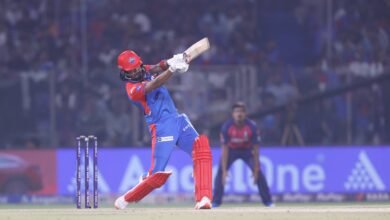India’s men’s hockey team cut down on flashiness in the quest for structural solidity

There was no heavy-metal hockey. None of those breathtaking runs or thrilling forward marches. Few speedy counterattacks, fewer risks and almost no flashiness.
Change the stripes and sport and it would feel like watching the recent Brazilian football teams – stripped of all the adventure, instinctiveness and fun in their desperation to ape the Europeans.
In his first match in charge, Craig Fulton showed he isn’t afraid to tinker with the Indian DNA. He picked simplicity over style, focussed on defence over attack and slowed down the pace immensely. The man who has been one of the masterminds of Belgium’s march to the top of the hockey world wants India to play like them.
It will be tempting for a fan to label the new-look India as boring. But for a team looking for consency and a permanent seat in the big boys’ club, this might not necessarily be a bad thing. However, for a bunch of players whose first instinct is to attack, it will take a lot for Fulton to drill in the discipline needed to execute his vision.
This was evident from the performance against Belgium in the Pro League on Friday. Captain Harmanpreet Singh lauded his players, saying the team ‘played very well structurally’, belying the 2-1 score line that went against them. Results in the Pro League, though, should be taken with a pinch of salt, given that the tournament is nothing but a glorified exhibition for most countries at the moment.
Yet, there is plenty to unpack from India’s first outing under the new coach.
Unlike the interim coach David John, who infused fresh, young faces in the team during his brief stay – a decision that signalled that Indian hockey was ready to move on and bid goode to some of the players who starred in the bronze medal-winning Tokyo Olympics campaign – the Fulton era has started with a U-turn on the philosophy.
Lalit Upadhyay, Akashdeep Sigh, Amit Rohidas and Mandeep Singh were all back in the squad; the promising young striker Selvam Karthi did not even make it to the bench; neither did comeback man Simranjeet Singh; and Manpreet Singh returned to the midfield after being played in the defence John, a move that seemed to have instilled stability in a fragile backline.
Fulton has travelled to Europe with a bloated squad, taking along 24 players instead of the usual 18, meaning he is likely to test all players during this eight-match swing before finalising his squad for the Asian Games.
While the chopping and changing of the playing group is likely to continue for a while, what could remain unchanged is the style of play. Before flying to London for the Pro League, the South African had stressed the need to have a proper ‘defensive structure’. There were glimpses of that on Friday.
Under former coach Graham Reid, India mostly played two-third court press. In Fulton’s first match, India retreated a little more, settling for a half-court press. None of the players ventured out of their positions and remained glued to the structure at all costs.
While defensively that frustrated Belgium, who scored the winner in the closing moments of the match, India were not able to shift gears smoothly when transitioning from defence to attack. It’s something they did effortlessly in the past but a change in style and a sharp reduction in pace meant the players were not able to find each other with as much ease as they would have liked.
Consequently, while the defence held its shape, forwards Abhishek and Gurjant Singh barely got a touch while Hardik Singh was unable to create the same impact that he has had in the recent games as India seemed shackled when they tried to go forward.
In Fulton’s first match, India were slow and steady; uncharacteric for a team that swore high-octane action.







